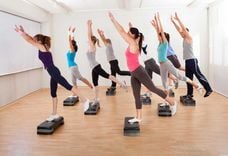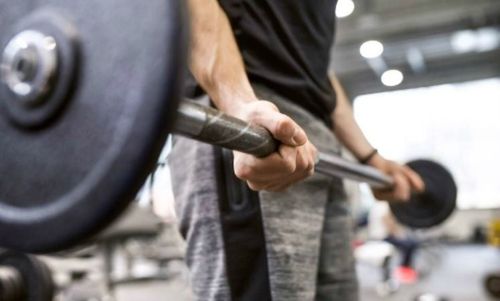This is an automatically translated article.
Weight training is an exercise that builds endurance and strength, helps build stronger, stronger muscles, strengthens bones and joints. It even boosts metabolism (burns more calories even at rest). Whether the goal is to gain muscle or to achieve a fit, toned body, the right barbell training can help you get there.1. When to start dumbbell exercises?
Having strong muscles can help improve everyday performance and reduce the risk of injury. For someone who has never done any type of weight training before, it's never too late to start dumbbell exercises. Weight training exercises are suitable for both men and women, and can be started at any age or at any physical level. In fact, people who practice dumbbell exercises do not have to go to the gym, they can use their own body weight for many exercises or use free weights at home to achieve results.If lifters have never lifted weights before, consider starting with the help of a personal trainer, who will be able to guide you through proper form for specific exercises and design a program training to suit your needs. In addition, trainees can also choose to perform dumbbell exercises at home with basic equipment.
MORE: 15 back exercises to strengthen muscles and prevent injury
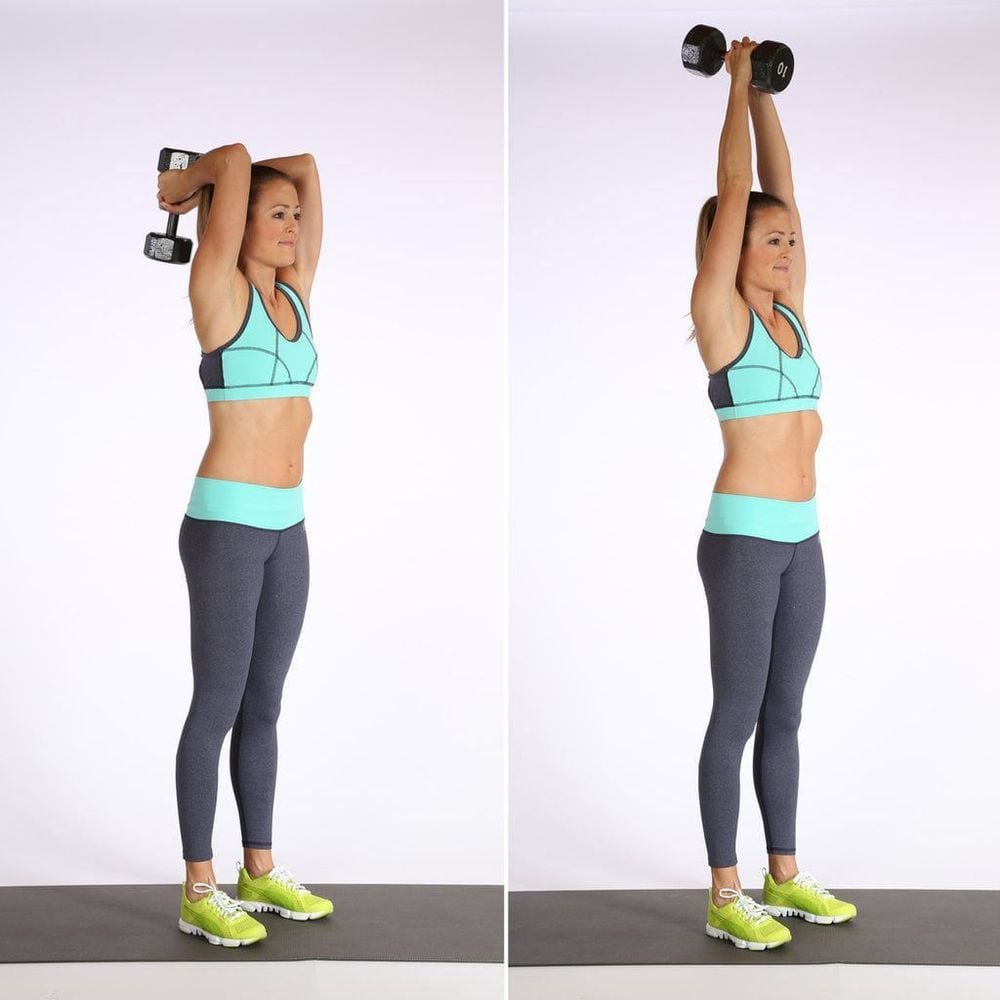
Bạn có thể tập các bài tập ta tại nhà
2. Things to know before starting dumbbell exercises
2.1. Warm up before training
Some aerobics movements, a 5-minute jog or brisk walk, will increase blood flow to your muscles and help them have a better workout. Jumping rope for a few minutes is also a good warm-up option.
2.2. Start with light weights
Trainers should start with a weight that they can lift 10-15 times with each movement. At the start, do 1 or 2 sets of each dumbbell exercise, doing 10 to 15 repetitions for each set, gradually progressing to 3 sets of each exercise or more.
2.3. Gradually increase weight
When the practitioner can easily do the recommended number of sets for each exercise, then increase the weight by 5-10%. Check to make sure the weight is right before you exercise. Rest for at least 60 seconds between sets, which helps prevent muscle fatigue, especially when you're just starting out.
2.4. How many minutes is enough for weight training?
Limit training sessions to no more than 45 minutes, lifters are advised to do dumbbell exercises within this time frame as longer sessions may not lead to better results but increase the risk of burnout strength and fatigue.
Gently stretch muscles after exercise, stretching helps to increase muscle flexibility, reduce muscle tension and reduce the risk of injury. When starting out, you can rest for a day or two between sessions. Rest gives muscles time to recover and replenish their energy reserves before the next workout.
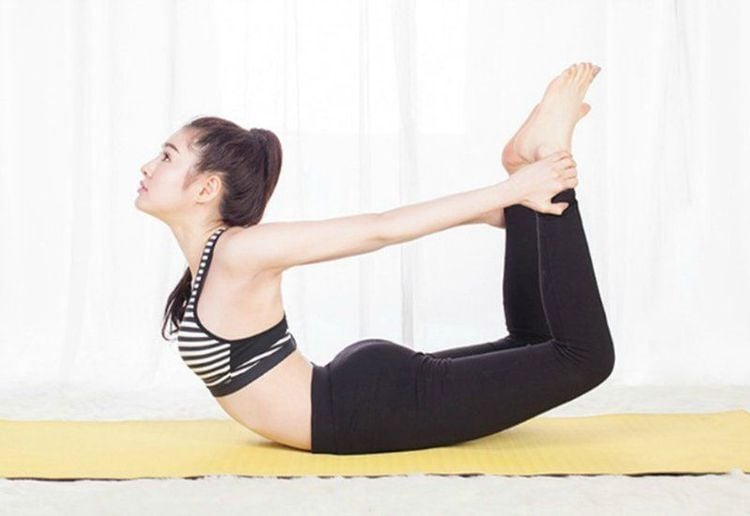
Không nên tập quá sức bởi có thể dẫn đến căng cơ
3. A guide to the right dumbbell exercises for beginners
Trainers are often especially interested in building biceps or toning legs, but a proper weight training program will work almost all major muscle groups in the body.
Start by doing 10 - 15 reps each set, each exercise should do 1 - 2 sets for beginners. Once familiar with the exercise, the practitioner can add extra sets and increase the weight of the dumbbells.
3.1. Dumbbell single-arm rows
The target muscle areas of the exercise are the back and biceps. Here's how to do this exercise:
Place your left knee on a firm bench and place your left palm on the bench for balance. Keeping your back parallel to the ground, reach down to grab a dumbbell with your right hand with your palm facing the bench. Slowly bring the dumbbell up to your chest. Squeeze your back and shoulder muscles, and slowly straighten your arms back to the starting position. At the end of 1 set, rest for 1 minute, then switch hands and do the next set with your right knee and right hand on the bench.
3.2. Dumbbell shoulder press
The target muscle area of the exercise is the shoulder muscle. How to do this exercise is as follows:
Sit or stand with a dumbbell in each hand, palms facing forward and elbows out to the sides creating a 90 degree angle. Without leaning back or arching your back, push the dumbbells overhead until your arms are almost straight. Slowly bring your hands back to the starting position.
3.3. Dumbbell chest press movement
The target muscle area of the exercise is the pectoral muscle. How to do this dumbbell exercise is:
Lie flat on a chair, holding a dumbbell in each hand, palms facing forward. Slowly push the dumbbell upward until your arms are shoulder-straight. Then slowly lower the dumbbells to the starting position, elbows should be slightly lower than shoulders.
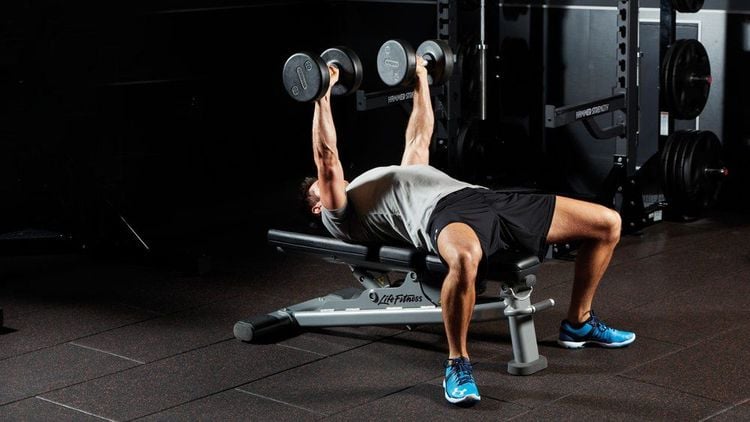
Động tác Dumbbell chest press
3.4. Bicep curls
The target muscle area of the exercise is the biceps (the muscle in the front of the arm). How to do this dumbbell exercise is:
Sit or stand, holding a dumbbell in each hand, elbows at your side and palms up. Bend the dumbbells toward your shoulders by bending your elbows but keeping them stationary at your sides. Release your hands to the starting position.
3.5. Triceps extensions movement
The target muscle area of the exercise is the triceps (the muscle in the back of the arm). How to do this dumbbell exercise is:
Do this exercise in a seated position on a bench or standing with your feet shoulder-width apart. Place a dumbbell in both hands. Raise dumbbells overhead until arms are straight. Bend your elbows to a 90-degree angle, lowering the dumbbell behind your head. Slowly straighten arms straight up so dumbbells are overhead.
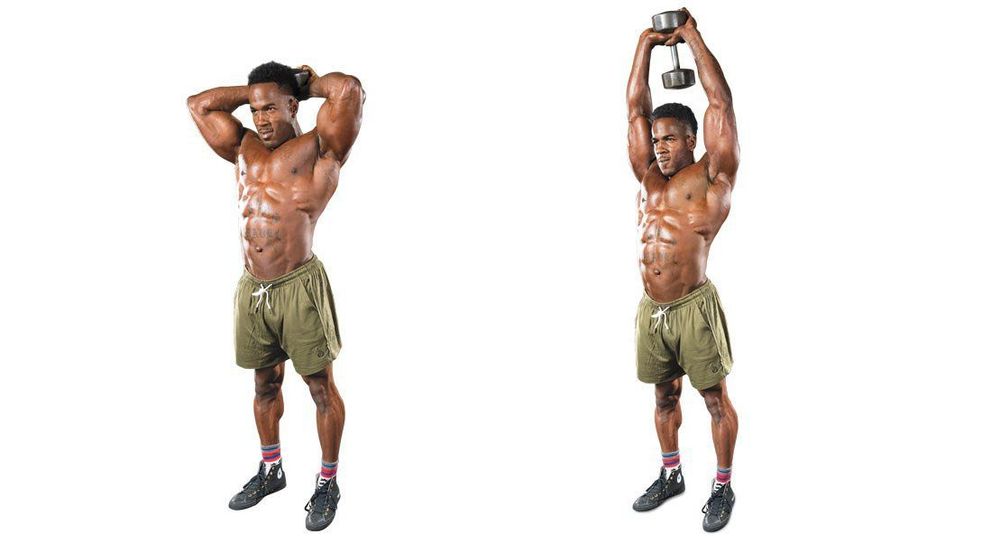
Bài tập Triceps extensions
3.6. Lunge with dumbbell movement
The target muscle area of the exercise is the calf muscles, including the quadriceps, hamstrings, calves, glutes. How to perform this dumbbell exercise is:
The practitioner stands upright, feet shoulder width apart, holding a dumbbell in each hand. Take a long step forward with your left foot so that your heel touches down first. Lower down so that the left thigh is parallel to the floor. Pause for 1 second, then roll the dumbbell toward your chest and then lower back to the starting position. Push your heels out and return to the starting position. Repeat, same with right foot.
3.7. Squats
The target muscle area of the exercise is the calf muscles, including the quadriceps, hamstrings and calves. How to do this dumbbell exercise is:
Squats can be done with or without dumbbells. Stand with your feet shoulder-width apart and slowly bend your knees, so that your thighs are almost parallel to the floor. Slowly raise your body back to the starting position. For more power, hold a dumbbell close to your chest with both hands. SEE ALSO: Exercises for thighs and calves
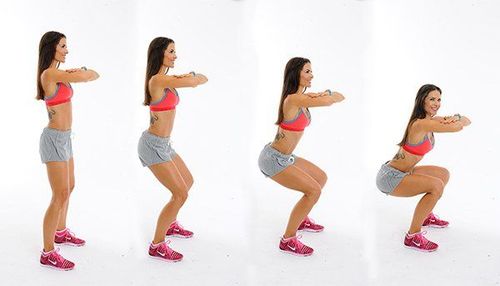
Động tác Squats là bài tập cơ bắp chân, bao gồm cơ tứ đầu, gân kheo và bắp chân
4. Schedule and notes when doing dumbbell exercises
If the practitioner's goal is to increase strength, not increase muscle size, just do dumbbell exercises 3 times per week. However, if the purpose of training is to gain muscle, the practitioner needs to repeat the movements more times and practice more often. It is important when exercising to focus on safety, pay attention to the feeling of the body's endurance, do not push yourself too quickly as this can lead to injury or cause health problems. . In addition, the practitioner needs to perform slowly, paying attention to the correct movement. Besides, you need to drink enough water during the training of dumbbell exercises, inhale before lifting weights and exhale while lifting. Finally, never hold your breath while doing dumbbell exercises.
Despite the many health benefits, stop exercising if you feel a sharp pain, if the pain does not subside when you stop exercising, seek medical attention. It is recommended to start with light weight until the practitioner masters the movements, then gradually increase the weight to avoid injury.
Please dial HOTLINE for more information or register for an appointment HERE. Download MyVinmec app to make appointments faster and to manage your bookings easily.
Reference source: healthline.com



